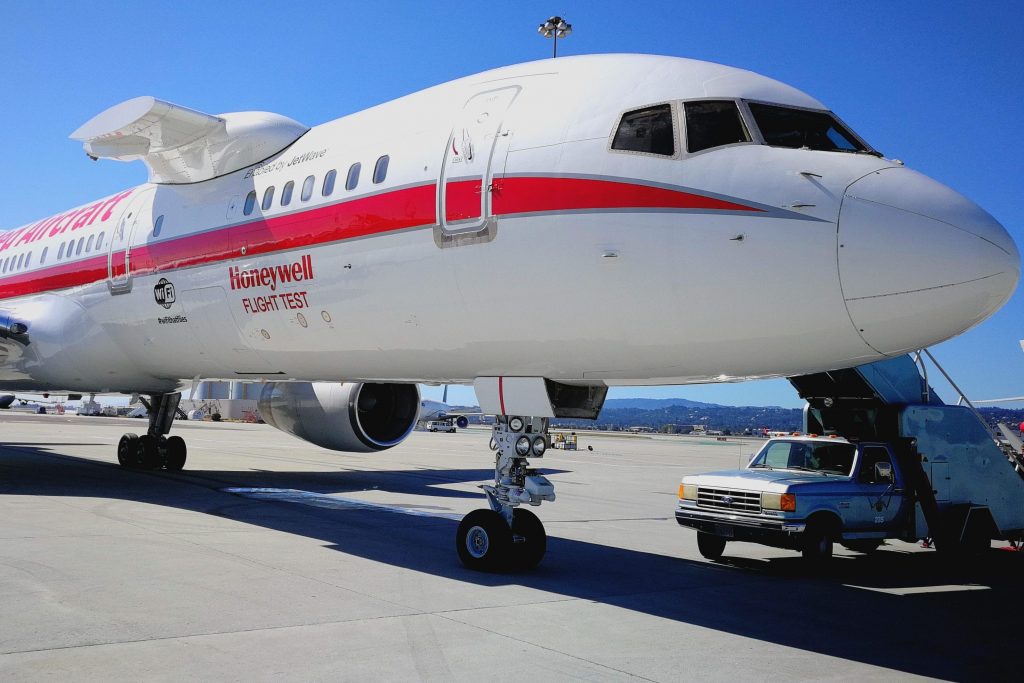Skift Take
Honeywell has a new suite of connected tools that it's bringing to market powered by satellite connectivity. In a crowded market, though, it may take some time before the potential is fully realized.
Enter another competitor seeking to wire up the aircraft, from consumer-facing Wi-Fi to pilot and ground analytics.
Honeywell kicked off a nationwide tour earlier this week, showcasing its connected aircraft capabilities. The Honeywell demos took place on a Boeing 757 that’s been outfitted for a variety of general engineering tests.
Unlike other in-flight communications providers, Honeywell is trying to bring a full stack of connected solutions to market, from the hardware that runs the Wi-Fi connections for services for passengers to analytics for pilots and ground crews.
On the consumer side, that solution, branded as JetWave, is geared to deliver bandwidth approaching 35MB in download speed. On the San Francisco flight, tests run through Speedtest.net returned download speeds ranging from 4MB to 27MB, depending on what server was used.
More practically, it was possible to stream YouTube and Netflix simultaneously while downloading a large file at 2MB — all without interruption. With an aircraft full of passengers and the bandwidth tube a bit more crowded, however, it’s easy to see how that signal could slow down.
So far, JetWave has been integrated on select Lufthansa aircraft and is in stages of integration in a handful of other international carriers, including Qatar and Singapore; no U.S. carrier has so far signed up for consumer-facing WiFi service.
Beyond in-flight W-iFi though, Honeywell seems to be equally committed to delivering corporate tools for the flight deck and ground crew. Onboard the test flight, the team showed off a suite of tools for pilot use, including tablet apps for flight management, landing simulation and weather tracking — all run through the Honeywell data pipe and backend.
And the team was quick to volunteer that UPS will soon start using Honeywell avionics across its Airbus A300 network.
The ideal solution, Honeywell admits, would be for an airline to invest in the full spectrum of tools from passenger Wi-Fi to flight deck solutions to on-the-ground analytics, but for now, the company seems to be willing to deliver services piecemeal, even if the satellite connection isn’t theirs.
Most consumers, too, will have to wait until an ultrafast Honeywell solution makes in-flight connectivity bearable. Currently, most U.S., carriers are either under contract or otherwise tied to an already existing solution such as GoGo or ViaSat, and by the time those commitments expire, new competing technologies will be on the table.
Regardless, Honeywell appears to be committed to competing not only in the passenger Wi-Fi space but also across the entire aircraft experience. Past its corporate solutions, if it can wait out some of the existing U.S. carrier contracts, it could be able to capture some significant marketshare.
The Daily Newsletter
Our daily coverage of the global travel industry. Written by editors and analysts from across Skift’s brands.
Have a confidential tip for Skift? Get in touch
Tags: in-flight
Photo credit: The Honeywell-connected aircraft that it used for demos, shown at San Francisco International Airport. Honeywell
